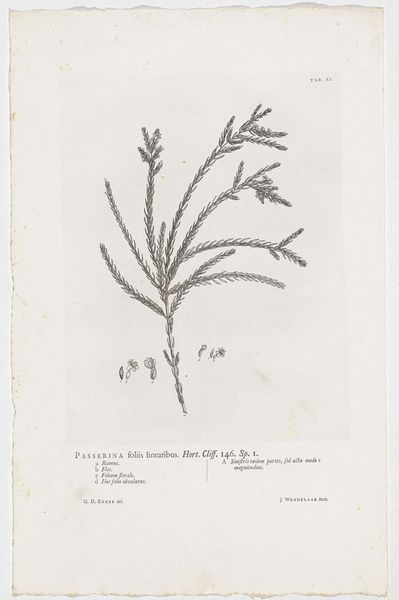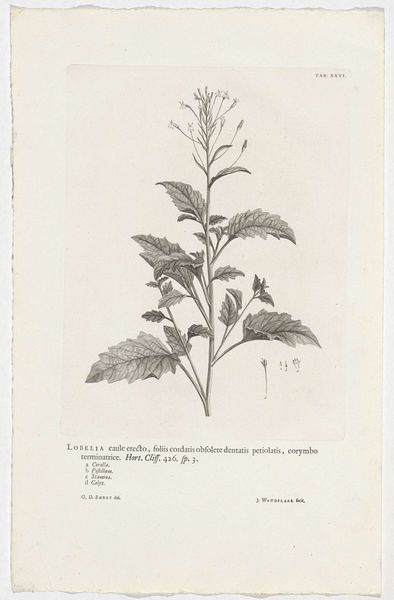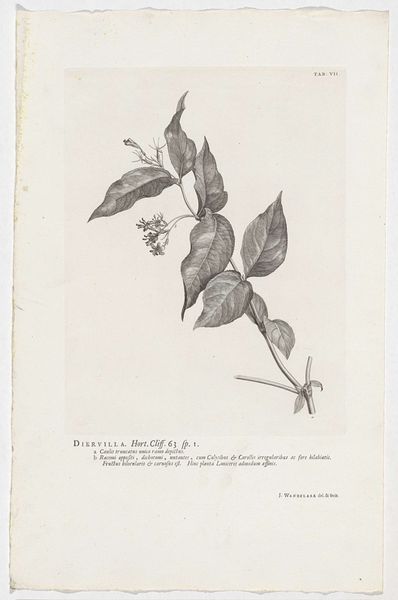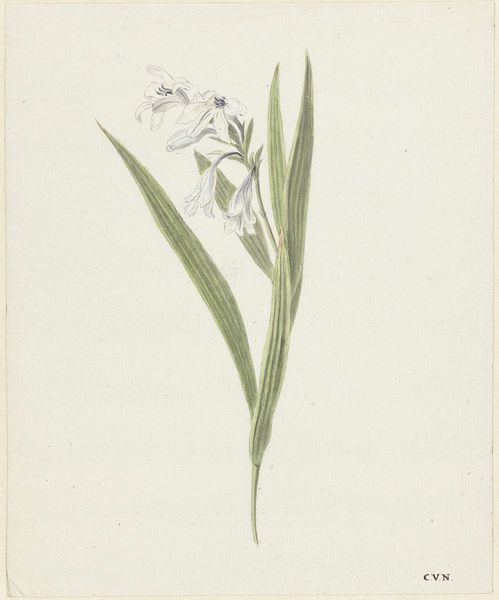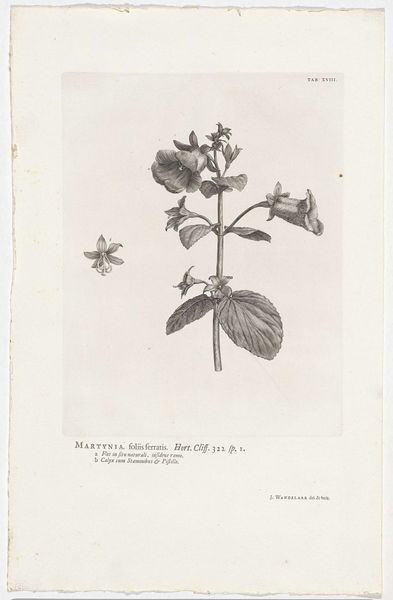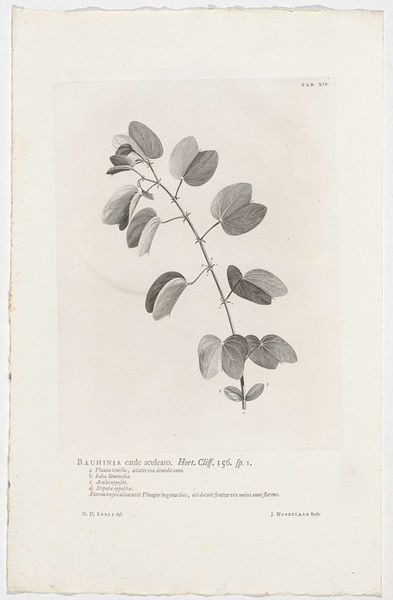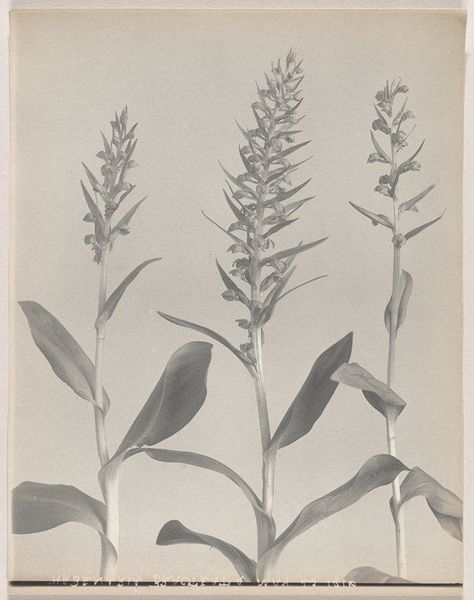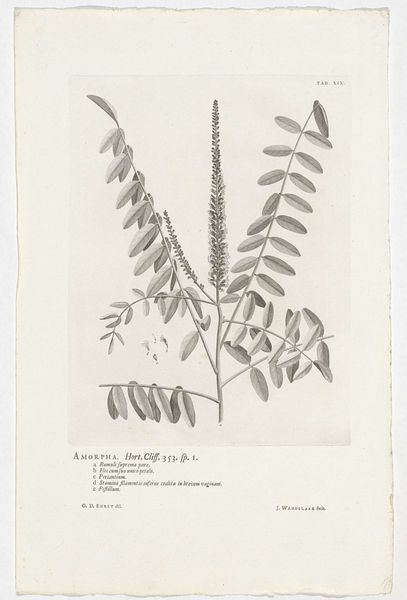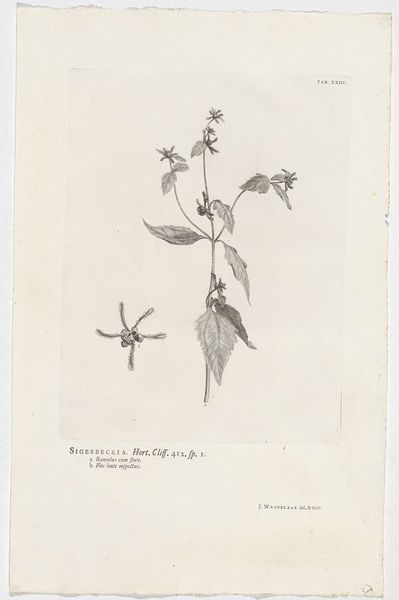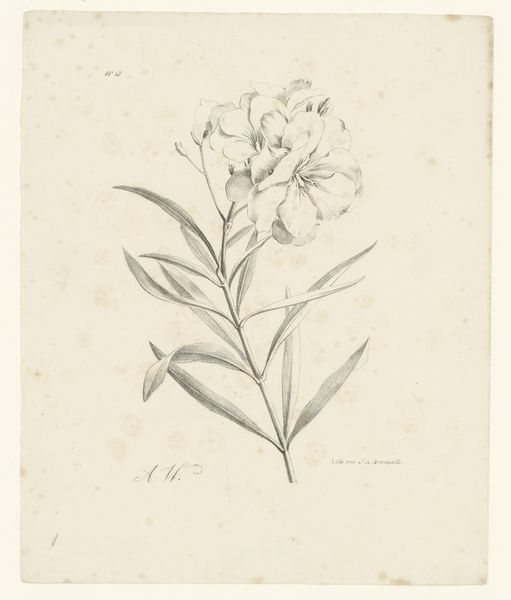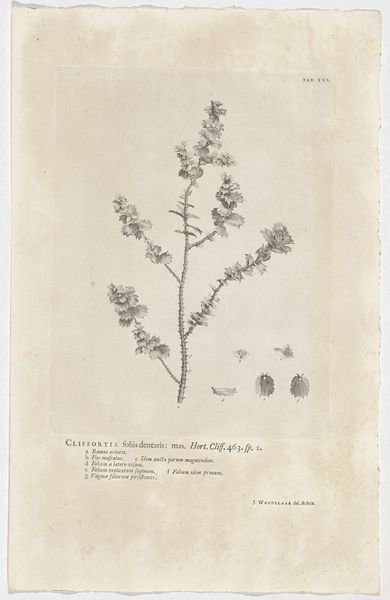
drawing, print, engraving
#
drawing
# print
#
flower
#
plant
#
engraving
Dimensions: height 291 mm, width 222 mm
Copyright: Rijks Museum: Open Domain
Editor: This is Jan Wandelaar's "Polygonum sagittatum," a drawing and print made in 1738. It’s delicate, almost ethereal, in its depiction of the plant. What symbols or meanings can we glean from such a detailed botanical illustration? Curator: The level of detail, first and foremost, indicates a desire to classify, to understand the natural world through visual record. But consider the date – 1738. We're on the cusp of Enlightenment, where visual representation becomes intrinsically linked to scientific advancement and control of the natural world. What kind of cultural memory, then, is embedded in its meticulous lines? Editor: So, more than just a picture, it’s a form of documentation tied to the scientific mood of the time? Is there anything significant in the specific plant itself, the Polygonum sagittatum? Curator: Indeed. Think about what plants represented: growth, healing, and a connection to the land. But in this period, the plants that were selected for documentation began carrying another meaning – power, status. Did certain flowers or plants signify political statements or social class? Was it, perhaps, about bringing the outside, inside – showing dominion? Editor: It’s fascinating to think about it in that light, beyond just scientific record. I see how much a simple plant drawing encapsulates its cultural period. Curator: Precisely! We remember not only the plant, but also the act of looking, classifying, and ultimately, how that shapes our understanding of the world.
Comments
No comments
Be the first to comment and join the conversation on the ultimate creative platform.
